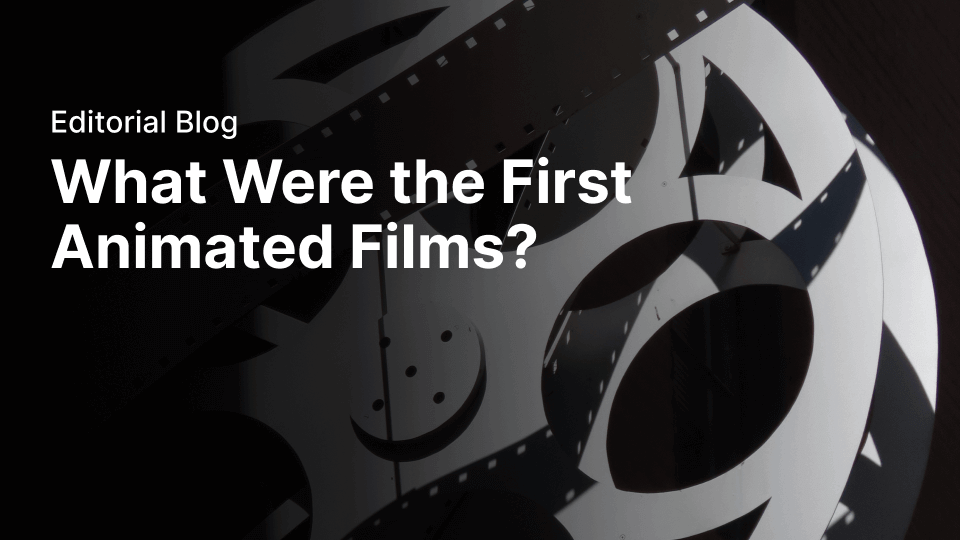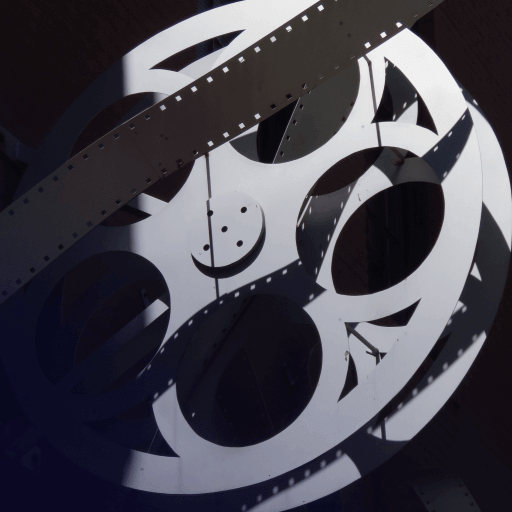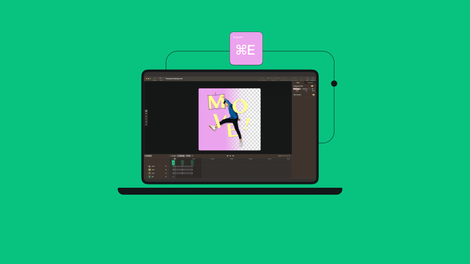Today’s animated movies are loved by both kids and adults alike.
Whether you’re a Disney fanatic or Studio Ghibli-obsessed, we’re spoiled for choice when it comes to picking a favorite. But these films wouldn’t exist if it wasn’t for the early pioneers of animation.
Creating the illusion of motion began with the phenakistoscope, a Victorian-era optical toy that spun and tricked the eye into seeing moving images. Animation devices continued to develop over time, but most of them were designed to be used by just one viewer at a time. It wasn’t until the early 20th century that animation appeared on the big screen and entertained larger audiences.
As technology developed, filmmakers and cartoonists began experimenting with different styles of animation. From the first stop motion films to the earliest feature-length animations, we’re here to take you through a fascinating timeline that details the history of animated films, from the famous studios involved in their creation to the type of animation being used. Read on to step back in time to the beginnings of motion pictures.
Jumpstart your ideas with Linearity Curve
Take your designs to the next level.
The first animated shorts
Humorous Phases of Funny Faces by J. Stuart Blackton, 1906
Released in 1906, Humorous Phases of Funny Faces is the earliest surviving animated film. The three-minute short was made using the stop motion and cutout animation techniques and is shown at 20 frames per second.
In the opening title sequence, the film begins with abstract white lines appearing on the screen. As more appear, letterforms begin to appear as if by magic, and the title of the film is revealed. The next scene features the hands of Blackton who draws a character on the chalkboard. The film then switches from live-action to stop motion, and the hand-drawn characters appear to move on their own. Special moments include a clown juggling a hat and a dog jumping through a hoop.
Fantasmagorie by Emile Cohl, 1908
Fantasmagorie was made by French animator Emile Cohl in 1908 and is one of the earliest examples of traditional hand-drawn animation.
Cohl was inspired by Blackton’s white-on-black chalkboard look, but he came up with his own form of animation for recreating it. Fantasmagorie was made by drawing each frame on paper and then shooting each frame on negative film. It was made up of 700 drawings that were each exposed twice, resulting in a running time of almost two minutes.
The title, Fantasmagorie, was taken from the original French word for “phantasmagoria.” This was a mid-19th-century magic lantern show with moving images of ghosts. In Cohl’s animated short, his character moves through surreal scenes, where other characters and objects morph into one another. For example, a wine bottle transforms into a flower and then becomes an elephant. This was the first example of the morphing technique that many animators still love today.
Cohl is often referred to as "the father of the animated cartoon," and his work went on to inspire many other great animators, such as Walt Disney, Tex Avery, and Max Fleischer and Dave Fleischer of Fleischer Studios. The later—Fleischer studios—produced classic cartoons such as Betty Boop and Popeye the Sailor.
Humpty Dumpty Circus by J. Stuart Blackton and Albert E. Smith, 1908
Humpty Dumpty Circus by J. Stuart Blackton and Albert E. Smith was made in 1908 and is believed to be the first film made with real objects and the stop motion technique. Unfortunately, there are no known copies and the film is considered lost.
The playful film features a group of performers at “Humpty Dumpty Circus.” These “performers” are actually wooden toys that appear to perform acrobatic stunts and play out comical scenarios.
When discussing the stop motion technique that was used to create Humpty Dumpty Circus, Smith said, “I used my little daughter's set of wooden circus performers and animals, whose movable joints enabled us to place them in balanced positions.” He continues, “It was a tedious process inasmuch as the movement could be achieved only by photographing separately each change of position. I suggested we obtain a patent on the process; Blackton felt it wasn't important enough. However, others quickly borrowed the technique, improving on it greatly.”

Gertie the Dinosaur by Winsor McCay, 1914
Gertie the Dinosaur, made in 1914 by cartoonist and animator Winsor McCay, is considered the first animated short to feature a distinguishable character. It was also the first film to use animation techniques such as keyframes, registration marks, tracing paper, the Mutoscope action viewer, and animation loops. Gertie the Dinosaur was so influential that it inspired the next generation of animators, including Walt Disney, and the team at Warner Brothers (aka Warner Bros.) that created the classic cartoon series, Looney Tunes, with its iconic animated characters like Bugs Bunny and Porky Pig, voiced by the titan of television animation voice acting, Mel Blanc.
Transform Your Ideas into Animations
Dive into the world of animation with Linearity Move. Perfect for beginners and professionals alike, our course guides you through creating stunning animations for any purpose.
The silent short film features detailed, hand-drawn backgrounds and stars Gertie the lovable dinosaur. She comes out from her cave and performs a series of tricks for her master (who commands her via words on the screen). Animated Gertie looks impressively realistic as she bows, raises her foot, and interacts with other animal characters.
The first feature-length animated film
El Apostol by Quirino Cristiani, 1917
Argentinian-born Quirino Cristiani (animator) and Italian-born Federico Valle (director) released El Apostol in 1917. It’s considered the first feature-length animated film in history, but unfortunately, the only known copy was destroyed in a studio fire in 1928.
Inspired by Émile Cohl’s later films, Cristiani used the paper-cut animation technique to create El Apostol. He made cut-out paper characters and moved them little by little until the entire 58,000 frames were shot. Surprisingly, the film was made in under a year, which is impressively fast for this style of animation.
The one-hour and ten-minute movie is a satire based on Argentina's president at the time, Hipólito Yrigoyen. In the film, Yrigoyen dreams about going to Mount Olympus and discussing politics with the gods before using one of Zeus's lightning bolts to free Buenos Aires of corruption.
The first Disney short produced with synchronized sound
Steamboat Willie, 1928
Steamboat Willie is an animated, black and white short film directed by Walt Disney and Ub Iwerks. It was the first Disney animation produced with synchronized sound, and it is also considered the debut of perhaps the most famous cartoon characters ever: Mickey Mouse and his girlfriend, Minnie. Although Steamboat Willie was the third Mickey Mouse film to be produced, it was the first one to be released.
Steamboat Willie is particularly significant due to the fact that it featured a fully post-produced soundtrack. This was a first for Disney, who understood the future of film involved synchronized sound. Music for Steamboat Willie was arranged by Wilfred Jackson and Bert Lewis, and it included the songs “Steamboat Bill” and “Turkey in the Straw.”
The first color animation with synchronized sound
Flip the Frog by Ub Iwerks, 1930
American Animator and cartoonist UB Iwerks worked alongside Walt Disney for several years, and he even designed Mickey Mouse (yep, it wasn’t Disney). However, in 1930, the two legends had a falling out, and Iwerks opened his own solo studio.
The first cartoon that Ub Iwerks made was called Flip the Frog, a series about a bow tie-wearing frog. Although the cartoons were more of a series rather than short or feature-length films, Flip the Frog is still worth mentioning. The first cartoon of the series was called Fiddlesticks, and it became the first animation with sound to be produced in two-color Technicolor. The Flip the Frog series was a huge success and ran for nearly forty episodes!
The first feature-length Disney film
Snow White and the Seven Dwarfs, 1937
Snow White and the Seven Dwarfs was the first feature-lengt film to be produced using cel animation. That means that characters were hand-drawn or painted on transparent sheets that were laid on top of still backgrounds. The Little Mermaid was the last Disney film to use this classic technique. In 1990, with The Rescuers Down Under, Walt Disney Animation Studios began using a digital method of animation known as the Disney Computer Animation Production System (CAPS).
Ready to create brand assets that pack a punch?
Visit our Academy for free marketing design courses.
Snow White and the Seven Dwarfs was adapted from the 1812 German fairy tale by the Brothers Grimm. The film’s production was massively ambitious, and Disney had to mortgage his house to help finance it. However, the risk paid off and Snow White and the Seven Dwarfs was an enormous success and is even considered an art form.
During the Academy Awards in 1938. Snow White was nominated for Best Musical Score. Then in 1939, Walt Disney was awarded an honorary Oscar for the film. The unique award comprised one normal-sized Oscar statuette, plus seven more miniature figures to represent each of the seven dwarfs.
The first official Studio Ghibli release
Castle in the Sky, 1986
Laputa: Castle in the Sky, or Tenkū no Shiro: Laputa in Japanese, was released in 1986 and was Studio Ghibli’s first animated film. Written and directed by Hayao Miyazaki, each frame was drawn by hand (like all Ghibli films).
Castle in the Sky is a fantasy adventure film set in a fictional late 19th century. It follows the story of a boy and girl who are searching for a legendary floating castle while trying to keep a magic crystal from the army, a group of agents, and pirates.
The film was an international success and is still considered one of the greatest anime movies of all time. The Japanese animation also made a huge cultural impact, as it introduced a new style of animation to the West.
The first full-length digitally animated film
Toy Story, 1995
Produced by Pixar Animation Studios and released by Walt Disney Studios in 1995, Toy Story was the first entirely computer-animated feature film.
For those that aren’t familiar with the film, Toy Story follows the antics of a group of toys who come to life when their humans aren’t looking. The makers of the film wanted to capture the real textures of each toy character, object, and scene, which is why they chose to try their hand at computer animation. Director John Lasseter spoke of the challenges: “We had to make things look more organic. Every leaf and blade of grass had to be created. We had to give the world a sense of history. So the doors are banged up, the floors have scuffs.”
27 animators worked on the film, using 400 computer models to animate the characters. Woody, Buzz Lightyear, and the other characters were either modeled out of clay or created digitally before being computer animated. Each model’s movements were coded, allowing them to move in a variety of ways, including walking, jumping, and face movements. Woody was the most complex character from the cast. He required 723 motion controls, including 212 for his face and 58 for his mouth.
This was the first Toy Story movie out of 4 and had a huge impact on the film and animation industry. In 2005, the film was selected by the United States Library of Congress to be preserved in the National Film Registry for being “culturally, historically, or aesthetically significant.”
DreamWorks’ first animated film
Antz, 1998
Antz was the first film from DreamWorks Animation, and the third feature-length computer-animated film.
Antz follows the story of Z, a small worker ant who convinces his soldier ant buddy to switch places with him. The film was voiced by an all-star cast, including Sharon Stone, Gene Hackman, Sylvester Stallone and Woody Allen.
During its production, a public feud began between DreamWorks co-founder Jeffrey Katzenberg and Pixar’s John Lassete, due to the production of their similar film, A Bug's Life, which was released a month later. Since both movies were about the lives of insects, Lasseter believed that Katzenberg stole his idea.
The first animated film to win an Oscar
Shrek, 2001
There are many earlier animated films which received critical acclaim and won Oscars in different categories. For example, Disney’s Pinocchio won two Oscars for "best original score" and "best original song," When You Wish Upon a Star. However, The Oscars didn't introduce the "best animated feature category" until 2002. The Dreamworks movie, Shrek, won the first Oscar for best animated feature. It was also nominated for the best adapted screenplay in the academy awards.
Fighting for recognition
From this list, you’ll probably agree that animation has come a long way since its humble beginnings. It took several decades for the genre to go from experimental animation for children to being a respected art form; film for adults, and one that can even win Academy Awards!
Studio Ghibli’s Spirited Away is one film that hugely influenced the perception of animation. Released during a time when animation was thought of to be a bit of a novelty, Spirited Away proved that animation could resonate deeply with audiences, just like a standard live-action film would. The feature film raked in $234 million and became Japan’s highest-grossing film at the time (2003). The commercial success of this film and other theatrical cartoons helped make animation a legitimate film genre in Japan, and it even helped to break cultural barriers, since it was also hugely popular in the western world. And today, even international streaming services like Netflix have movies from the film company Ghibli in their archive.
Despite the huge success of many animations, the film genre still faces some challenges in the industry, as animated films tend to be less well-respected than live-action movies. For example, at this year’s Oscars, the award for Short Film (Animated) was presented off-air, rather than live. This decision was based on wanting to package films of the same type together and to “prioritize the television audience to increase viewer engagement and keep the show vital, kinetic, and relevant.” This example reveals that it might still take more time before animation gets the full recognition it deserves.
In this list, we're celebrating the most groundbreaking animations the 20th century and beyond, but there are plenty more amazing films we missed. If you're interested learning more about influential animators, we suggest looking up the work of John Bray (of John Bray Studios), John Kricfalusi, John Lasseter, Max Fleischer, Tex Avery, Tim Burton, Pete Docter, and Bill Hanna & Joe Barbera.
Have you seen all of these breakthrough films, and do you have a favorite from the list?
Here at Linearity Curve (formerly Vectornator),, we’re fascinated by the ins and out of motion animation. Check out our previous blog posts on Disney’s 12 Principles of Animation and the History of Computer Animation.
Jumpstart your ideas with Linearity Curve
Take your designs to the next level.


Share this!
Emma Taggart
Emma is a Content Writer for Linearity in Berlin. Her hobbies include making ceramics, roller skating, drawing, and 2D animation.


:quality(75))
:quality(75))



:quality(75))




